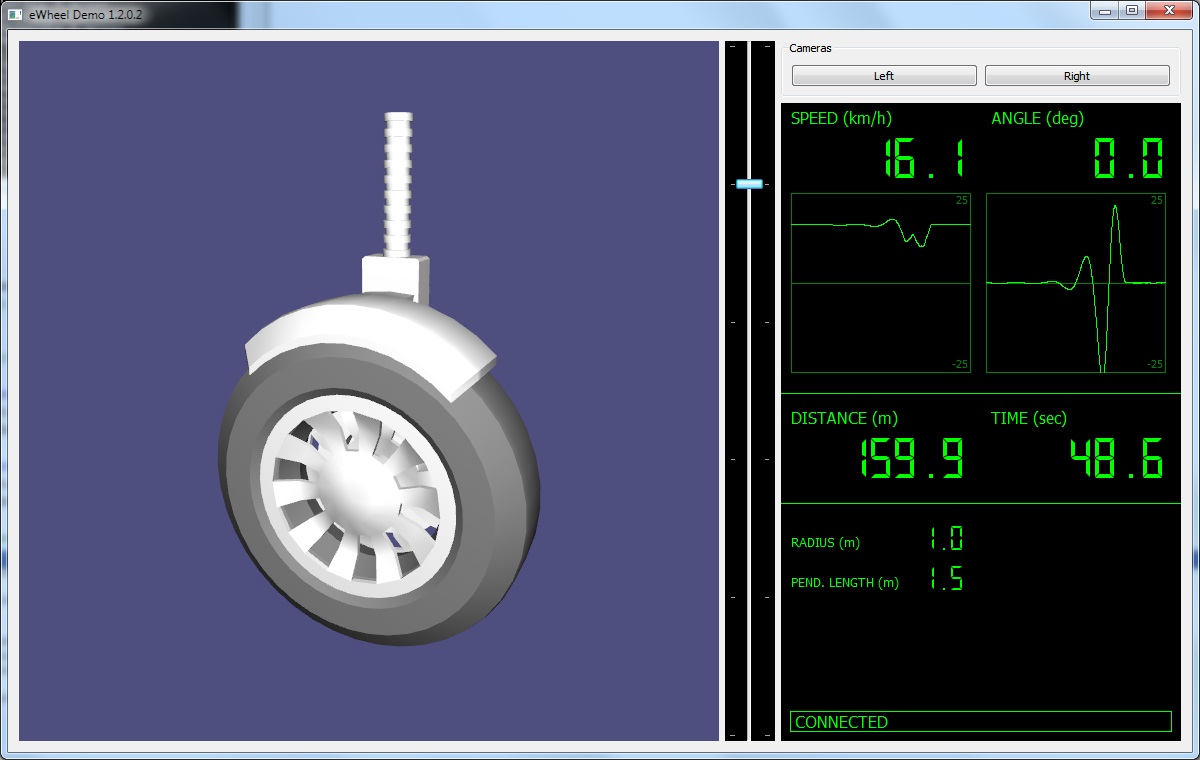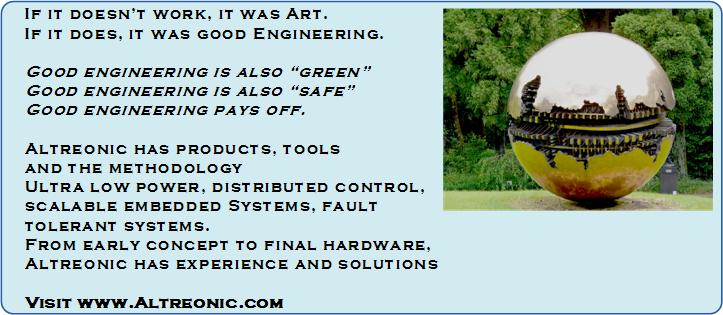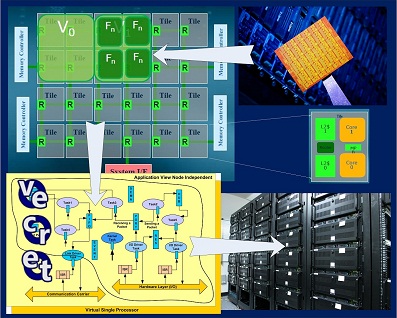Trustworthy forever
Source code included. New API manual for OpenComRTOS 1.4
Following the imminent release of the Springer book on OpenComRTOS, Altreonic has decided to now include the kernel source code and the build system with its licenses. Hence the binary license is dropped and replaced with the source code license. With v 1.4. also a new users manual was released coovering all integrated tools as well as the Safe Virtual Machine for C. The OpenTracer is now also available as a stand-alone tool.
Download the latest Win32 OpenComRTOS suite and the new manual from the download section. This is a unique opportunity to discover that parallel concurrent programming on large heterogenous networked processors, whether on a single chip or physically widely distributed, is not difficult at all. Provided the right paradigm is used from the very beginning. We call it "Interacting Entities".
What's the lifetime of a digital processor?
Before this question can be answered, we need to refine the question. A simple answer could be that the lifetime of a processor is equal to its MTTF or Mean Time To Failure. This doesn't help us a lot because the MTTF is not a unique number. Leaving out the mean calculation, just like interrupt latency the Time To Failure is not a unique number. It is a histogram and the distribution will depend on the usage pattern.
Download OpenComRTOS designer suite v.1.4. Master thesis proposal on a safety case.
 The OpenComRTOS designer suite v.1.4. (Win32) with new supporting tools and demos is now avalable from the download section.
The OpenComRTOS designer suite v.1.4. (Win32) with new supporting tools and demos is now avalable from the download section.
An interesting new example is the e-wheel simulator (see screenshot). It is composed of 3 nodes, one handling the input from the user, one running the control loop and one running the physical model. An additional windows application handles the 3D visualisation and user input. While the example is a simulation, it is complete and by a simple recompilation the controller node can be remapped to e.g. an attached ARM controller (of any other supported). This ewheel demo is also the subject of a Master Thesis proposal supported by Flanders Drive. Interested students can contact us or Flanders Drive. For details see the attached thesis outline.
OpenComRTOS project book ready for review
Altreonic has finalised a description of the OpenComRTOS project in the form of a book to be published by Springer. It discusses the reasons behind the project, why and how formal methods were used, and how the results were beyond our initial expectations. Its title is:
"Formal Development of a Network-Centric RTOS: Software Engineering for Trustworthy Embedded Systems".
Before the book will be printed, we are looking at giving it a last polish based on the review of a few selected readers. If interested, please contact Eric (dot) Verhulst (at) Altreonic.com stating your motivation and credentials. The selected reviewers will receive a hard copy once the book is printed. Below the preface and the T.O.C.
Meet Altreonic at Embedded World, Nuremberg 1-3 March 2011
As last year Altreonic will be exhibiting at the Embedded World exhibition and conference. Highlights are:
- OpenComRTOS 1.4 suite with unique support for distributed priority inheritance with resource management and the integrated Safe Virtual Machine for C.
- OpenCookBook v.2 in preview
- StarFish scalable and SIL3/4 capable controllers.
Besides integrated software tools and hardware controllers, Altreonic offers its expertise to customers looking for innovative solutions, in particular in the domain of low power and smart distributed or fault tolerant control.
Altreonic is also presenting at the Embedded World conference on Tuesday, March 1 at 1400. Dr Bernhard Sputh will present in session 05 (RTOS II) the paper “A safe virtual machine for C in less than 3 Kbytes”. A preview of the paper and the presentation is available from our website.
OpenComRTOS release v.1.4 - with Safe Virtual Machine for C.
Altreonic is new releasing v.1.4 of its breakthrough formally developed network-centric OpenComRTOS suite. While the visual development environment was enhanced to make multi-processor developments even easier, v. 1.4 now has the Safe Virtual Machine (SVM) for C fully integrated and the RTOS itself has now fully distributed support for priority inheritance for easier resource management. The latter is a pre-condition for lower power consumption and better predictable real-time behaviour at the application level.
Missed Altreonic at Electronica 2010 in München?

Missed Electronica-2010 and you were looking for enabling technology for embedded systems?
Altreonic has solutions that might also work for you:
- a common sense systems and software engineering approach to embedded systems
- an integrated real-time and concurrent software development environment
- a formally developed network-centric RTOS that can handle large heterogeneous targets in 5 KiBytes/node
- controllers that can be scalable as well as fault tolerant.
Here's your chance to catch up:
Order the OpenComRTOS suite v. 1.4 for ARM-M3 and Win32 before 31.12.2010 at a special price of 9990 euro and get a Luminary ARM development kit for free. This is our latest release and an ideal way to experience how easy parallel concurrent real-time programming can be. Take one of the supplied examples, modify it or just remap some of the tasks to another node with no source code changes. The visual modelling environment and its code generators make even programming the C code very straightforward. Contact us at info.request (@) altreonic.com for more details.
Download our presentation on "Concurrent systems composing in a reliable and efficient way".
Abstract: Push button high reliability might sound like a clever marketing slogan, but at Altreonic we make it happen. The key to it is combining a long experience with a formalised approach. This allows us to make systems smaller, more reliable and thus better. It is a formalised process that works because the human side has been taken into account. Unified semantics is hence one of the expressions you will often hear at Altreonic. The result is that safety engineering is now within reach of small and medium sized companies.
Download the presentation here.
Access the full presentation here (30 minutes).
Or have a look at a 3 minutes video interview by ICC Media. See it here.
For which application domains does Altreonic's technology make a difference? We highlight the main ones:
- Ultra low power applications. Code size matters.
- Distributed sensing and control. Because OpenComRTOS is concurrent at the core.
- Scalable processing system. Because OpenComRTOS disassociates topology from the application.
- Fault tolerant processing. Because redundancy is natural for OpenComRTOS.
Feel free to visit our website at www.altreonic.com for more details or download the Windows version of the OpenComRTOS suite for free. Learn how concurrent, parallel real-time programming can be more natural than shared memory sequential or multi-threaded programming.
Interested? Contact us at info.request (@) altreonic.com or register for our newsletter.
Altreonic is now looking for partners world-wide.

Announcement - Altreonic porting to Intel Labs 48core SCC chip

Altreonic has signed an agreement with Intel Labs to port its multicore capable OpenComRTOS to the Single-chip Cloud Computer (SCC) experimental processor, a 48-core ‘concept vehicle’ created by Intel Labs as a platform for many-core software research. It incorporates technologies intended to scale multi-core processors to 100 cores and beyond, such as an on-chip network, advanced power management technologies and support for “message-passing.”
Programming parallel systems with many processor cores has been at the core of Altreonic’s technology for many years and hence it was natural for Altreonic to join in the effort as it already has proven technology.
Altreonic’s scalable and formalized technology gives more for less.
Altreonic is now announcing two new products that clearly demonstrate how a formalized development can result in more scalability and less energy consumption. First we present our brand-new Safe Virtual Machine for C in just 3.8 KB. Next we present a port to the ultra low power CoolFlux DSP core of NXP. Formalized development is more than verifying correctness, it actually results in cleaner, more efficient and more scalable architectures.